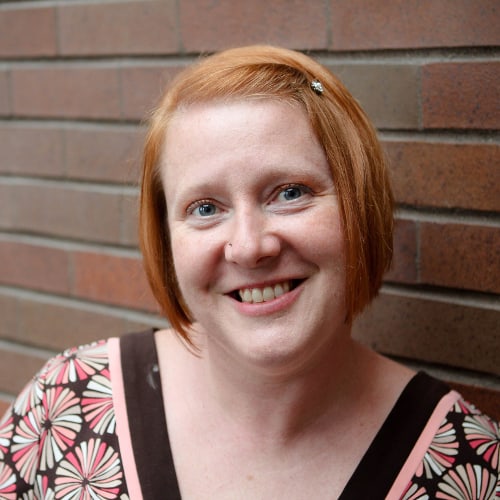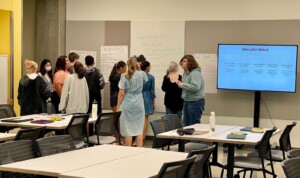PBL and Co-Teaching: New Partnerships Mean New Paths

As the school year ends, it is every teacher’s mantra to relax and refresh, sleep in and stay out late–which sounds good in theory, but most teachers will tell you that it is impossible to dial back the teachers we are and let go of what means so much to us for the other 10 months of the year.
Some years are easier than others, of course. Both my children were born in April, so those years I was too busy figuring out how to actually leave the house with an infant and a toddler, so I didn’t think too much about school. However, other years are more difficult to walk away from–particularly the extremes. This year is proving hard for me to let go of, and it is because I know that much about my teaching will change next year.
One of my co-teachers is retiring, and I will be working with a new Special Education integrated co-teaching partner. I’m open to new people, but as a teacher who runs a Project Based Classroom, I start to panic when I think about how much there is to explain about how we learn in Room 255.
Whenever I start to worry about something I always try to think how I could write about it, and this issue is no different. As I drove home today, I realized that I do have a pretty good idea of what I need to do–I just need to remind myself to take things one step at a time. So here are the three steps I’m going to take to make a smooth transition:
Step One: Paint the Big Picture First
Instead of stressing over the minutiae of every project we do, I’m going to talk about the way I plan to approach next year:
- September is almost entirely relationship building: getting to know each other, pre-assessing and building the speaking and listening skills that students will need later to present their projects.
- October and November we will collaboratively read a novel, ending with our first taste of PBL: the group Utopia project.
- In December and January we focus on reading and writing memoirs, and the projects students choose are individual and self-directed.
- February and March are for Passion Projects (and reading non-fiction), and
- The end of the year next year is going to be my first foray into MAD projects (Making a Difference), which I fell in love with recently from a teacher I learned from on Twitter, Peter Cameron, who shared his student projects.
My new co-teacher will hopefully be able to zero in on her own teaching responsibilities because she is privy to the big picture. When working with a Special Education co-teacher like I will, I think it is important to make sure that the regular education partner is transparent and organized from the get-go so that the Special Education teacher can analyze what and when to pre-teach.
Step Two: Shout it Loud
One of the most amazing things about teaching right now is the ability to positively promote the great things that are happening in the classroom. I’ll share my website with my new co-teacher, but I will also set the tone by asking for input into ways to celebrate students.
Sometimes a low tech option like a popsicle party on a hot day is just the thing, but sometimes something a little more 21st century, like a nice message sent out to families using Remind or on Twitter, is needed. Over the years, I’ve “stolen” lots of ways to celebrate students’ PBL accomplishments, but I know that there’s always something new around the corner.
With PBL, I focus on BAM (burning questions, authentic audiences and millennial skills). The authentic audiences are super important, so one “head’s up” my co-teacher will need is to understand that Room 255 is an open classroom, with parents, administrators, curious students and even outside members of the community visiting often, particularly to watch student presentations or participate in student demonstrations. This is something to get used to, so I will make sure not to spring it on her without warning, as some teachers are not initially thrilled with us having an audience at any time either.
Step Three: What’s My Role?
Finally, the one thing that co-teachers have to do is to understand the roles each will play. Since this will be the first year of the partnership, I’ll make sure that the roles are explicit and clear–something that I think becomes more blurred over the years. For example, a huge component of PBL in my classroom is the organizational and procedural routines. Our students will be able to get to know my new co-teacher when she is doing some of the check-in’s with students.
Another great role for our first year together will be to take on the role of questioner. I learned this “trick of the trade” from a gentleman I taught with a few years ago. Whenever he anticipated that students would need more clarification, he’d jump into my instruction, quizzically asking, “So, does that mean that . . .?” He’d jokingly call me Dr. Chandler, mockingly asking “Dr. Chandler, can you explain that in regular people words?” or some other joking reminder to me to remember my audience. My new co-teacher will find her own voice, of course, but I will encourage her to act as an incognito student.
Though I’m nervous about having a new co-teacher, I can feel my excitement build as I write about this new experience. I’m looking forward to a new dynamic with exciting opportunities. PBL is always an adventure, and the best way to prepare for an adventure is to expect the unexpected and plan for what you can, knowing that the real learning will happen for all of us when we go off the beaten path.
Stay tuned for a GPS update of where this expedition will take us this year!
For more, see:
- Smart Review | Make, Learn, Succeed: Building a Culture of Creativity in Your School
- Beat the Summer Slide with Project-Based Learning
- Reflect versus Critique in the PBL Classroom
Stay in-the-know with all things EdTech and innovations in learning by signing up to receive the weekly Smart Update.






0 Comments
Leave a Comment
Your email address will not be published. All fields are required.